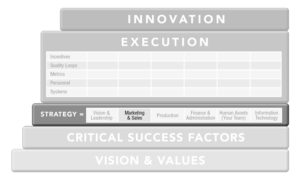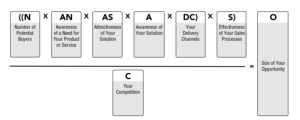Innovation has many aspects.
When we think about innovation perhaps a new app, electronic device, or medical breakthrough may come to mind.
Earlier this month I had the pleasure of touring four Disney theme parks in Florida and because of my interest in innovation I visited several of the attractions that delved into some of the many innovations that Walt Disney brought to the world.
Some of these innovations were:
- Mickey Mouse, Minnie Mouse, Donald Duck, Goofy, Pluto and many others
- The multiplane camera which transformed flat, one-dimensional animation into layered shots with depth and movement
- The first cartoon with synchronized sound – Steamboat Willie (1928)
- The first full-length animated feature film – Snow White and the Seven Dwarfs, 1937
- The Circle Vision filming technique, which allows filming and presenting movies in 360 degrees, thus surrounding the audience – late 1950’s
- An optical printer that enabled combining live-action and animation in films
- The concept of a theme park
- Audio-animatronic figures that moved, gesticulated, and talked like real, live beings
- Theme park rides like “It’s a Small World” and Pirates of the Caribbean that immersed the visitor in the ride

Walt Disney’s Marketing and Sales Innovations
But relatively few of us may be aware of Walt Disney’s Marketing and Sales innovations.
Shortly after Mickey Mouse was introduced 1929, all sorts of Mickey and Minnie figures and toys were marketed by Disney. Soon Mickey Mouse napkins, ice cream cones, wallpaper, books, phonographs, clothing, and much more were being produced.
Then, in 1933 the most famous Mickey Mouse product was introduced. The Mickey Mouse watch – which to this is day is still popular.
This focus on Marketing and Sales innovation continued with the first feature length animated film, Snow White and the Seven Dwarfs, 1937. An integrated merchandising program was employed with the film’s release that inundated the market with Snow White products.
This emphasis on Marketing and Sales innovation has continued with Disney films, TV, theme parks, and more, and it is a key component of all that Disney does.
Using Innovation in Your Marketing and Sales Area
I would like to examine how innovation can be applied to your Marketing and Sales area.
When you think about your Marketing and Sales area, perhaps innovation may not come to mind. But over the years many innovations have occurred in marketing and sales.
For instance, SPIN selling, identifying your Unique Selling Proposition, and one of the most innovative efforts in the past 40 years, the concept of Guerrilla Marketing™ by Jay Conrad Levinson.
Be sure to remember the definition we use for innovation which is – “doing something in a better way”. Keep in mind that your Marketing and Sales innovations may run the gamut from relatively simple actions to very complex and far-reaching ones.
In the past two newsletters we have looked at our foundational game changing business growth and scaling methodology, the Structure of Success™ and how it is the underpinning of effective innovation.
So far, per the diagram below, we have covered developing a Compelling Vision for your business and identifying your company’s Critical Success Factors. Next, a strategy must be employed for achieving your Vision and accomplishing your company’s Critical Success Factors. This strategy must address all six areas of your company.
Next, a strategy must be employed for achieving your Vision and accomplishing your company’s Critical Success Factors. This strategy must address all six areas of your company.
The Six Areas of Your Business
No matter the size of an organization there are six areas of any business. A startup company has these six areas and IBM and Microsoft have the same six areas. While IBM, Microsoft, etc. may be a lot more complex than a startup, every business has the same six areas. These areas are:
1) Vision and Leadership—What is the Vision for your business and what Leadership are you providing to drive your company toward this Vision? Your Vision and Leadership area leads to your Marketing & Sales area.
2) Marketing & Sales—How are you going to market your products/services and what will be your sales process? Then the Marketing & Sales area leads to your Production area.
3) Production—How are you going to produce what you are marketing and selling?
4) Finance and Administration—What will you do to manage your finances and handle administrative activities?
5) Human Assets—How will you best manage your personnel or “team”?
6) Information Technology—What can you do to leverage your internal Information technology area so it provides you with a strategic competitive advantage?
Each of these six areas have a number of components that comprise their functioning. A key part of the Structure of Success™ are the formulas it uses to identify each of these components and how they relate to the other elements of each formula.
The Elements of Your Marketing and Sales Area
Per the diagram below, I would like to examine how innovation can be applied to your Marketing and Sales area. Each of these elements is discussed in detail in my upcoming book Work Less, Make More and Have Fun in Your Business, which is due out in January 2022. Due to space, I will only cover three of the below seven components, and only at a very high level.
Number of Potential Buyers
To determine the number of potential buyers in your market these six questions need to be answered:
- Who is your customer?
- What is your customer’s perceived need?
- Are there segments to your market?
- What segment do you choose to pursue?
- What does your customer look like?
- What is the geographical reach of your market?
Answering these questions in a detailed fashion can be used to gain a better understanding of your current customer or evaluate entry to another market.
Innovation – Using this evaluation and information gaining process, one of our clients, a very successful IT staffing company, was able to identify which other staffing markets were most attractive and what it would take to become a major player in those industries.
Attractiveness of Your Solution
To develop an effective Marketing and Sales program, you must first gain a thorough comprehension of the attributes of your product/service that make it appealing to your customer. To do that you must first understand what are your customer’s short-term and long-term goals as related to your product/service?
Once you know those and how your product/service can help them, you can combine that with the concept of Creating experiences worth repeating™ . Which is – creating an overall experience that is so good, your customer will want to repeat it. Once you know and do those two things, you have created a very attractive solution for your customer.
Innovation – Armed with this knowledge, an HVAC client of ours was able to engineer into their company a product/service that met their customer’s short-term and long-term goals and the overall experience was so good, they became the number one HVAC company in a large United States metropolitan area.

Effectiveness of Your Sales Processes
The Effectiveness of Your Sales processes is built on the five prior Marketing and Sales steps. The five prior elements of the formula fall into the category of Marketing, while this step is specifically Sales related. The crucial question is how effective is your entire sales function in converting potential buyers into customers?
Your sales process involves closing the sale, and it usually involves one-on-one interaction—sales calls, presentations and meetings, networking events, interaction on your website, etc. Those engage the target customer on a personal level.
Innovation – Once a software company client of ours completed an analysis of their Marketing area they were able to craft a much more effective Sales process that focused on understanding the needs of the different types of prospects that were coming to it. This resulted in a much higher sales conversion rate and increased customer satisfaction rate.
Where to Start
Once you have developed a compelling Vision for your business and identified your Critical Success Factors, then review the seven elements of the Structure of Success™ formula for your Marketing and Sales area.
As you consider each element, think about and brainstorm how you can develop innovative (i.e., better and more effective) ways for marketing and selling your product/services.
Keep in mind that the definition we use for innovation is – “doing something in a better way”. The results of your effort may yield small innovative steps as well as breakthrough actions, the sum of which can transform your Marketing and Sales area.
If you could use assistance with applying innovation to your Marketing and Sales area, please contact us using the information below so we can be a resource to you in this vital area.
Fountainhead Consulting Group, Inc. is an Innovation and Business Planning firm. During the past 17, years we have shown over 1,200 companies how to achieve their goals by using our unique, comprehensive, and systematic FastTrak Innovation Program™, Innovation Academy™, and Structure of Success™ methodologies. Using the components in these methodologies, each month we examine an aspect of how to transform your business or organization into a true 21st Century enterprise.
Office: (770) 642-4220
www.FountainheadConsultingGroup.com
George.Horrigan@FountainheadConsultingGroup.com
Tags: entrepreneur, front end of innovation, innovation, invention, small business consulting, small business planning, start a business

